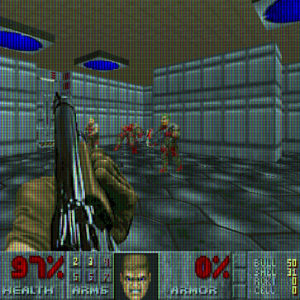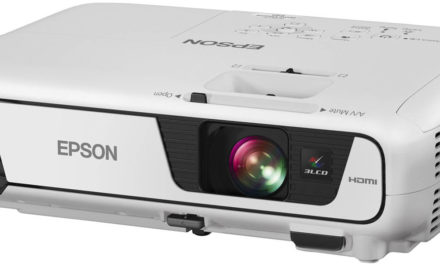Part 2: The problem with pixels.

Ok, maybe current VR doesn’t look this bad, but it’s not far off
Current VR systems lack the visual fidelity required to deliver a truly immersive experience. Compared to a typical television or desktop monitor, a VR head mounted display (HMD) requires a screen with orders of magnitude higher resolution to achieve the same relative detail. This makes sense when you consider that the pixels on a typical HMD are mere centimeters away from your face, and further magnified in order to achieve a realistic field of view. While VR headsets has benefited from the advancements in display technology over the last decade or so, they are still a long way from being detailed enough to provide a lifelike image. For example, a typical desktop monitor at standard viewing distance has a density of about 50 pixels/degree, while modern cellphones clock in at an impressive 100 pixels/degree. A typical HMD with a combined resolution of 1920 x 1080 (the same as that used in the PlayStation VR), only has a pixel density of about 11 pixels/degree. The result of this low pixel density is what many people refer to as the “screen door” effect. Basically, the pixels are large enough that you can easily discern them individually, significantly breaking the illusion of reality.
In order to achieve true immersion in virtual reality, HMDs will need to be equipped with displays that are roughly an order of magnitude more detailed than they are currently. A combined resolution of 8k (7680 x 4320) should be sufficient, and would represent a 16-fold increase in pixel count over the 1080p displays used currently. As it stands, current VR headsets are severely lacking in visual fidelity, to the extent that they are barely acceptable. Any experience that you have with a current gen VR headset will be diminished as a result. With 4k and even 8k HMDs on the near horizon, you’re better off holding out if you’d rather not experience a grainy, pixelated image.










